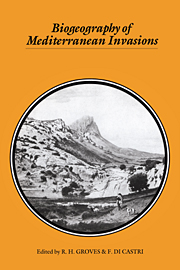
Biodiversity Update–Progress in Taxonomy
Taxonomy and systematic biology responded to the “biodiversity crisis” and the Convention on Biological Diversity (CBD) by defining three major challenges: completing the inventory of life, discovering evolutionary relationships through phylogenetic analysis, and providing information via the Internet (2). Progress in reconstructing the “Tree of Life” (3, 4) is effective and well coordinated, with phylogenetics increasingly integrated into ecology, biogeography, and developmental biology (5).
However, we are far from placing each species in its phylogenetic context, because the inventory itself lags behind. Out of a minimum of 4 million species, about 1.7 million (6) have so far been recognized through comparative studies of preserved specimens in reference collections. Information technology can accelerate this work (7), but the core of the discipline will remain. Specimens will be needed to confer repeatability on the hypothesis that a particular element of biodiversity constitutes a species and for taxonomists to identify new species and unfamiliar organisms.
As the World Conference on Sustainable Development (8) convenes, do we know enough either to conserve biodiversity or to make the best use of it? The Global Biodiversity Information Facility (GBIF) is a vital step toward accessible species-level information (9, 10). It establishes an informatic architecture for synthesizing knowledge, capable of uniting taxonomic initiatives such as Species 2000 (11) with regional databases (12, 13). If information that exists only in biological collections can also be computerized, users everywhere will share the benefits (14). Retrospective digitization of collections requires most investment, after which data capture and stewardship can be linked to ongoing curatorial work. Access to images of the type specimens that define species is one of the highest priorities, and the All Species Foundation’s proposal to digitize 50% of them in 5 years (15) poses no technical challenges once funding is secured. Surprisingly, digitizing collections is a contentious topic where the priorities of conservationists and taxonomists differ. The former tend to favor biodiversity conservation databases (16) based on field observations of the status of species. The latter recognize the importance of such efforts that build on the traditions of biological recording but point out that they are only practicable for groups where taxonomic work has progressed to provide detailed species level information.
Otherwise, what can be observed and recorded? This, together with the availability of skillful amateurs equipped with excellent field guides, is why birds are useful indicators of trends in biodiversity, but microalgae, although suitably widespread, abundant, and sensitive to change, are not. Historical data from collections already play a powerful role in planning and development in Mexico (17) and could do so universally. Biological collections may represent an inadequate sample of past and present biota, but they are the only identified and authenticated sample we have. Biological recording and collections are complementary, not competing, sources of knowledge about the world, with the latter enabling repeatable observations and entirely new kinds of investigation. Prospects are not good for the first and most fundamental challenge: a global inventory of life on Earth.
E.O.Wilson diagnosed the problem as the limited capacity of collections institutions and the shortage of taxonomists (18), conclusions shared by a recent UK review (19). Wilson estimated the cost at around $5 billion, about the same as the Human Genome Project. Success would require increased taxonomic capacity, in terms of people and collections, around the world. These are the goals of the Global Taxonomy Initiative (20), for which developing countries can receive resources from the Global Environment Facility (GEF) (21).
The All Species Foundation also aspires to complete the global inventory within “a single human generation” but focuses on developing sources of private funding. Redirection of existing resources might be more effective. Developed countries mainly contribute to the international objectives of the CBD through the GEF, which has so far committed $3.86 billion to biodiversity projects, especially in protected areas. They might achieve more by targeting a significant proportion of the resources that go to the GEF directly to their own taxonomic institutions, enabling them to reap the benefits of the long-term investment that created them. There can be little doubt that such resources could be deployed rapidly and effectively. The National Science Foundation has shown how quickly taxonomic expertise can be generated even in groups where it was scarce (22). Strategic plans, and the networks to implement them, have been established in many regions (23-25) with a few countries alrea***mitted to national inventories (26, 27). The documentation of life on Earth, on which our own well-being ultimately depends, surely deserves to be among our most urgent priorities for investment.
Science 11 October 2002: Vol. 298. no. 5592, p. 365 DOI: 10.1126/science.1075026

















